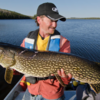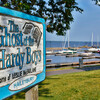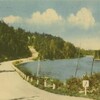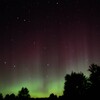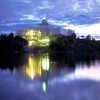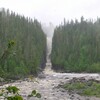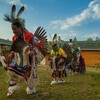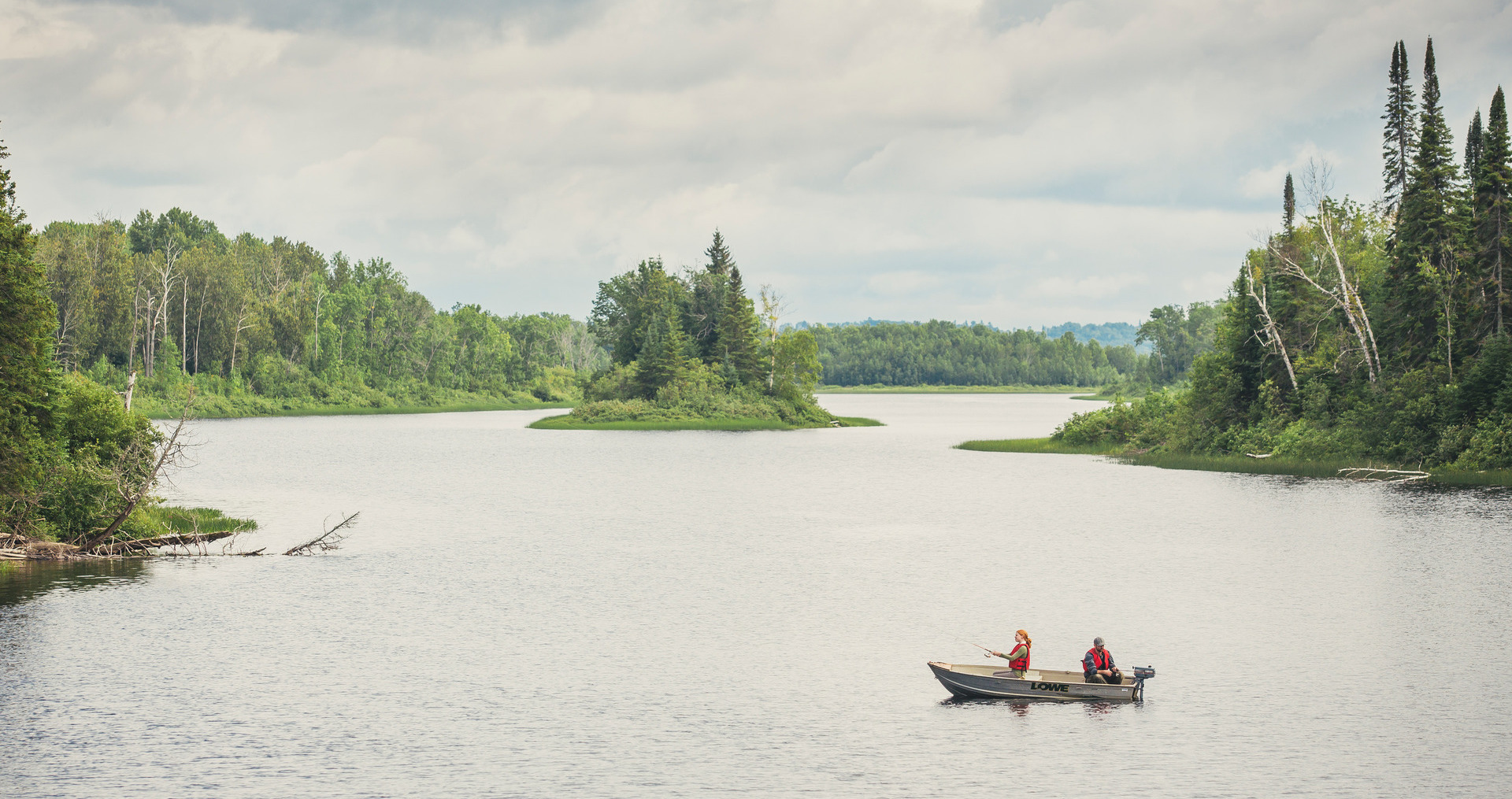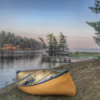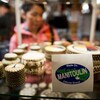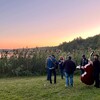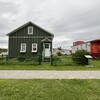
How Did Settlers Celebrate the Season?
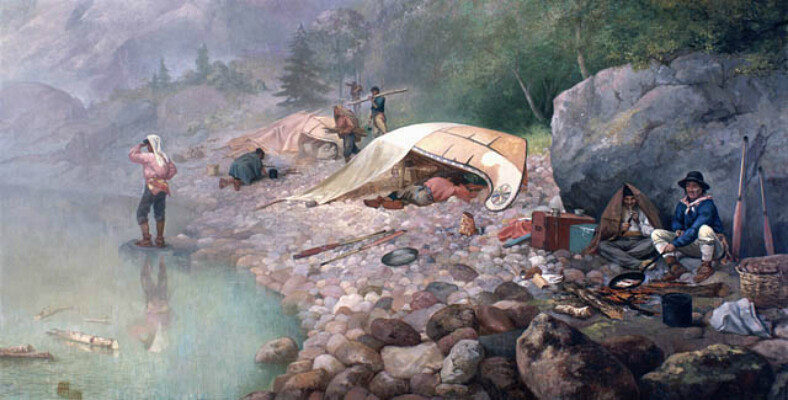
Mention the phrase “Trading Post” and you might picture a tacky log cabin selling trinkets to tourists. But as the snow starts to fly, and hot drinks and warm conversation enliven our winter, it’s worth celebrating the original Hudson's Bay Company Trading Posts of Northeastern Ontario. These early posts, built along canoe routes opened up the land and allowed settlers to celebrate the season—to order holiday gifts, hear news from afar, and feel the warmth of a community that was scattered throughout this vast landscape.
Often it was the Factor, the post’s commanding officer, who would host the Christmas feast, perhaps “a beautiful fat, plump wild goose” served with a “kettle of punch.” Rare treats of apples, raisins, or a pudding set alight were often accompanied by music. Often, Indigenous guests were part of the festivities. In 1942 at the Moose Factory post, for example, inhabitants enjoyed Scottish tunes “accompanied by fiddle, guitar and First Nations’ moose-hide drums.”
Anticipation mounted for the kids, too. “Years have passed,” wrote author Helen Dickson, whose family lived 41 miles (66 km) from a trading post. “But I can still recapture the delicious blending of scents, the soft feeling of new woolens, and the warm, fresh colours of the luxuries that were revealed from the Hudson’s Bay box at Christmastide.”
The Legacy of the Trading Post
Today, the legacy of the trading post endures. Some, such as the log cabin in Mattawa (erected in 1784), are museums telling tales through fascinating exhibits. Step into the picturesque Mattawa & District Museum at the junction of the Ottawa and Mattawa Rivers to examine a trapper’s cabin, sewing kits made of bone or a necklace of bear claws. “I kept finding things in boxes and people would bring things,” reported Jayne Lenard, the artistic manager of the Mattawa and District Museum.
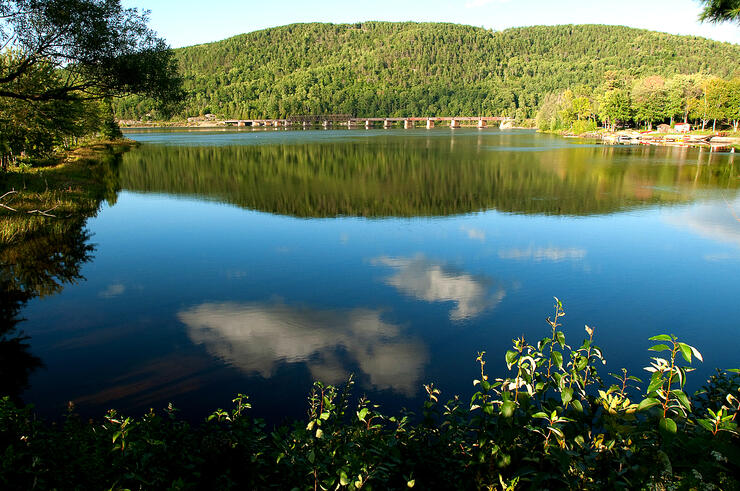
Or, enter the Gogama Heritage Museum, a former 1922 Hudson’s Bay Company store to view past treasures and learn about legendary Wolf Man Joe LaFlamme. After taming a pack of wild wolves, this local “mountain man” became famous throughout North America, even mushing his team down Broadway in New York. “LaFlamme had a certain type of energy that must have been very special,” says Suzanne Charron, who tells the full story in her book, Wolf Man Joe LaFlamme: Tamer Untamed. The museum is open during summer weekend afternoons or by request.
Locations in Northeastern Ontario
Here are just a few of the other Northeastern Ontario trading post sites you are able to experience and explore for yourself:
Moose Factory River Post
This second-oldest post of the Hudson’s Bay Company (established in 1672; records begin 1730), also known as Moose Fort, was built at the mouth of the Moose River. Visitors can see vestiges of the Hudson’s Bay post, but perhaps more memorable is the guided tour of the nearby Cree Cultural Interpretive Centre. Discover the history of the Mushkegowuk Cree people, see the animals they relied upon, and marvel at ingenious artifacts such as woven rabbit skin blankets. Open during summer months or by request.
Temagami

For years, visitors to Temagami Island would come upon the ruins of a small 1820 Hudson’s Bay Company post (an outpost of a larger one in the Ottawa Valley). In 1870, the post was moved to nearby Bear Island where the Temagami First Nation welcomes visitors each July to their annual pow wow where everyone is welcome for the dancing, food, and celebrations. Or, take to the two-day Temagami Canoe Festival (usually in July as well) to paddle the pristine waters of the sparkling lake; all ages are welcome.
Timmins
In 1794, The Hudson’s Bay Company established an outpost on Frederick House Lake to thwart fur traders from intercepting goods en route to Moose Fort (Moose Factory). This plan succeeded so well that in 1812, it became a chief post welcoming such famous explorers as Radisson and des Grosseilliers. After a shocking murder during the winter of 1812-13, the post declined and was abandoned in 1821.
Nevertheless, in nearby Timmins, thanks to one lucky fellow who slipped on a rock in 1909 (thus uncovering a huge gold deposit), the area became the most productive gold-mining area in the western Hemisphere. Today, at the Timmins Museum: National Exhibition Centre, experience a mine shaft hoist, and admire pieces of gold as well as glittering specimens from the Canadian Shield. In the gift shop, kids can eagerly fill a small bag with as many rocks and minerals as can fit.
Manitoulin Island
The first post in La Cloche Provincial Park across from Manitoulin Island, the world’s largest freshwater island, was built by the North West Company, probably around 1790. By 1829, three posts were overseen by Chief Factor John McBean. Unfortunately, he reported severe outbreaks of measles but also, “So many barrels of most excellent Trout and Whitefish” that they were able “to assist the Natives in need.” Today, Manitoulin Island is still famous for its fishing. Three rivers (Kagawong, Manitou, and Mindemoya) offer fantastic catches of Atlantic salmon and trout.
Pow Wows across Manitoulin welcome visitors throughout the summer. Or walk the paths of the ancients along the scenic Cup and Saucer Trail, with its dramatic high lookouts over the Niagara Escarpment. Note: good boots and hiking experience are recommended for the adjacent Adventure Trail.
Gogama
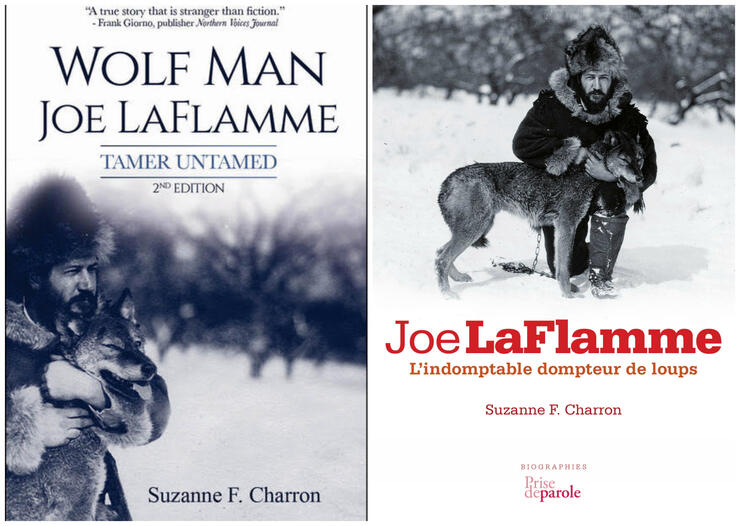
This town (located between Sudbury and Timmins) was home to the famous Wolf Man Joe LaFlamme (1889-1965), one of Northern Ontario’s most captivating (and unknown) legends. Internationally known in the 1920s, LaFlamme was famous for taming a pack of wolves and mushing them around town—even taking his team to race down Broadway in New York City. “LaFlamme had a certain type of energy that must have been very special,” says Suzanne Charron, author of Wolf Man Joe LaFlamme: Tamer Untamed.
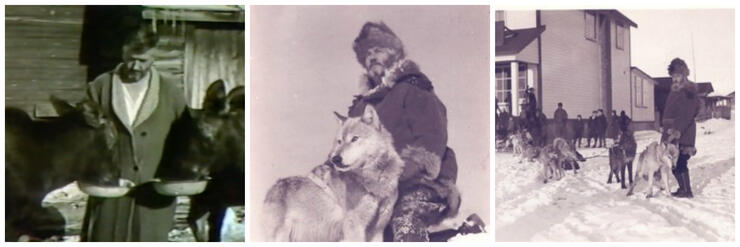
At the Gogama Heritage Museum, a former 1922 Hudson’s Bay Company store, learn more about this ingenious “wolf whisperer” and his Parisian-born wife; examine his original sleigh or watch a silent movie of him working with wolves. Open weekend afternoons, or by request.
Missinaibi Provincial Park
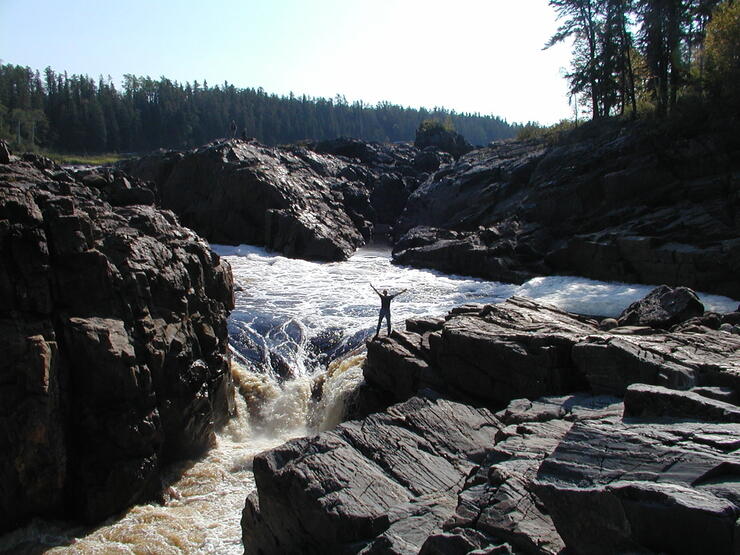
Missinaibi Provincial Park is popular for its paddling, wildlife viewing, and fishing opportunities—and for being a former Hudson’s Bay trading post in the park. As you paddle the 238-km (144-mile) route through the large Missinaibi Lake, you may come upon the Fairy Point pictographs and also remnants of the post.
Experienced paddlers will test themselves with the whitewater rapids, river drops (as the Missinaibi River descends from the Canadian Shield), and seven portages. Allow seven to nine days to complete this exciting, historic canoe journey.
-----------------
These are only some of the most popular sites to experience Hudson's Bay Company history in Northeastern Ontario! For more information, see this resource from the Archives of Manitoba.
Recommended Articles
The Seven's Best Hikes, Biking Trails and Lakes

7 Best Spots to Check Out in The Seven

Budget Bliss: Explore Northeastern Ontario Without Breaking the Bank

Bring Your Fam!

Time to Unwind: 6 Spa Havens to Discover In The Seven
5 Amazing Places to SUP in Northeastern Ontario

5 Amazing Bike Rides to Discover

Northern Lights in Northeastern Ontario

Northeastern Ontario's Best Pride Festivals

Fish for one of the World's Rarest Species of Trout

An Insider's Guide to Manitoulin Island

6 Small-Town Gems to Explore in Northeastern Ontario

11 Best Things to Do in Kapuskasing, Ontario





